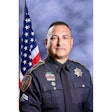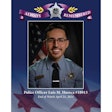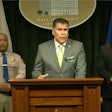When I was a kid in the 1960s going to elementary school in the dying remnants of the Jim Crow South, the adults around me would talk about “prejudice.” Prejudice would be discussed by my teachers, on the nightly news, in the newspapers, and even in my Batman comic books. “Prejudice” was the polite white Civil Rights-era shorthand for “racial prejudice,” which was itself the polite white phrase for “racism.”
It was only years later in junior high school that I learned the actual Webster’s definition for “prejudice.” In sociology terms it’s what we would today call “implicit bias,” as in ascribing negative behavior to someone just because that person is from a specific group such as an ethnicity or racial group. In general terms it means to literally judge someone without having the facts or even bothering to learn the facts.
Today, some 40 years or more after the term “prejudice” was replaced in the polite American vocabulary with “racist,” you as law enforcement officers are both being accused of prejudice against all people of color while being victimized by people who are prejudiced against you.
I woke up to an example of prejudice against you the same morning I wrote this column. The mainstream press and some of my progressive friends were absolutely having a conniption that officers in Kenosha, WI, let the suspected 17-year-old vigilante shooter walk past them and leave the scene, even though people were yelling that he had just shot someone. The reason they are so angry is they believe police gave the suspected shooter a pass because he was white and he shot protesters.
That could be true. It’s unlikely. Yet I will concede that since there’s been no investigation, it could be true. But none of the people saying it have any facts. They just have video. And video is the Rorschach test of modern America; the meaning is all in the eyes of the beholders.
Here’s what I beheld. The shooting happened down the block. It could be that when the young man walked past them with his hands up like he was surrendering and his rifle across his body, the police did not know a shooting had occurred. I also believe the officers who were in vehicles did not hear the protesters screaming that the teen with the rifle had just shot someone. Of course this is just educated supposition on my part, and I don’t want to prejudge what happened based on a snippet of video and my personal bias to advocate for police.
Which separates me from the Democratic governor of Wisconsin. The honorable Tony Evers has decided to play firestarter in this horror show of a summer. Immediately after a Kenosha officer shot wanted subject Jacob Blake at the scene of a domestic, Evers tweeted out on the official governor’s account: "While we do not have all of the details yet, what we know for certain is that he is not the first Black man or person to have been shot or injured or mercilessly killed at the hands of individuals in law enforcement in our state or our country.”
You have to give Evers some credit, at least he paid lip service to the concept of investigating the shooting before drawing conclusions. But then he threw a match into a barrel of gasoline with his wording about officers “mercilessly” killing black men. Talk about prejudging a situation.
Such prejudice against officers is spreading chaos nationwide. The organized Chicago looting spree that nearly destroyed Chicago’s Magnificent Mile last month is an example. That festival of pillaging and burning in the name of racial justice was sparked by rumors that police had killed an unarmed child. The Chicago officers had actually shot and wounded a 20-year-old man who was armed with a handgun. But social media spread the lie, and prejudice against police led to mobs of people carrying TVs out of the shattered front of a Best Buy.
The night before I wrote this column false rumors and anti-police prejudice led to another looting attack, this time in Minneapolis. In that incident, police confronted a homicide suspect at a local mall and he shot himself. Of course, the anti-police groups spread rumors that police shot and killed the guy and he was unarmed. Video from the Minneapolis PD, released less than two hours after the incident, clearly shows that the suspect took his own life. But that didn’t matter. The damage had already been done. The rumor had reached the ears of people who will believe any slander against you.
Anti-police prejudice is tearing our country apart. The cry in the streets is “no justice no peace,” but the people shouting that slogan have forgotten that justice begins with an investigation, not outrage over a video.















